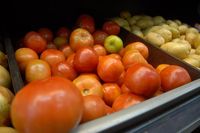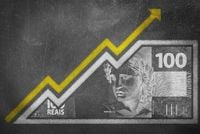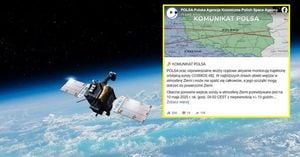The Broad National Consumer Price Index (IPCA), considered the official inflation indicator in Brazil, registered an increase of 0.43% in April 2025. This figure, released by the Brazilian Institute of Geography and Statistics (IBGE) on May 9, marks a deceleration compared to the previous month, when inflation was recorded at 0.56%. Despite the slowdown, the April figure represents the highest percentage for the month since 2023, when it was 0.61%.
In the year to date, the IPCA has accumulated an increase of 2.48%, while the inflation rate over the last 12 months reached 5.53%, exceeding the government's target of 3% with a tolerance range of 1.5 percentage points. This means the target is considered unfulfilled if inflation remains outside the range of 1.5% to 4.5% for six consecutive months. Since the beginning of 2025, all monthly results have been above this ceiling, raising concerns about the rising cost of living.
The IBGE reported that of the nine price groups surveyed, eight showed positive inflation, with Food and Beverages and Health and Personal Care exerting the most significant influence on the overall index. The Food and Beverages group saw an increase of 0.82%, contributing 0.18 percentage points to the IPCA. Notably, food consumed at home increased by 0.83%, while food away from home rose by 0.80%. The most significant contributors to this rise included potatoes, which surged by 18.29%, tomatoes at 14.32%, and ground coffee, which increased by 4.48%.
However, not all food items experienced price hikes. Some products saw declines, such as carrots, which dropped by 10.40%, rice, which fell by 4.19%, and fruits, which decreased by 0.59%. The Health and Personal Care group recorded the highest percentage increase of the month at 1.18%, impacting the overall index by 0.16 percentage points. This rise was largely due to a government-authorized increase of up to 5.09% in pharmaceutical prices, which took effect on March 31, 2025. Additionally, personal hygiene products increased by 1.09%.
Other notable increases were observed in the Clothing group, which rose by 1.02%, driven by higher prices for both women's and men's clothing, as well as footwear and accessories. The Communication group increased by 0.69%, while Personal Expenses saw a growth of 0.54%. In contrast, the Transport group was the only category to register a decrease, falling by 0.38%. This decline was primarily influenced by a significant drop in airfare prices, which decreased by 14.15%, and a 0.45% reduction in fuel prices.
Within the Transport category, all fuel types reported negative variations in April 2025: diesel oil decreased by 1.27%, vehicular gas fell by 0.91%, ethanol dropped by 0.82%, and gasoline, the most significant item in the IPCA, decreased by 0.35%. The reduction in diesel prices was attributed to a price cut at refineries effective from April 1, while the drop in ethanol prices coincided with an increase in the sugarcane harvest.
When separating the inflation data into items of services and monitored prices, the IBGE noted that the service index decelerated from 0.62% in March to 0.20% in April. In contrast, monitored prices, which are controlled by the government, accelerated from 0.18% to 0.35%. The behavior of service inflation is one of the factors evaluated by the Monetary Policy Committee (Copom) of the Central Bank when deciding the basic interest rate, currently at 14.75% per month. Higher interest rates tend to reduce consumption, which can help control inflation.
Interestingly, residential electricity prices saw a slight decline of 0.08%, attributed to tax reductions (PIS/Cofins) in certain regions. The IPCA data also revealed that the National Consumer Price Index (INPC), which measures inflation for families earning between one and five minimum wages, increased by 0.48% in April. This index accumulated an increase of 2.49% for the year, with a 12-month rate of 5.32%, up from 5.20% in March.
The INPC is particularly significant as it influences the adjustment of salaries for various categories throughout the year, reflecting the financial pressures faced by lower-income families. While the IPCA encompasses households with incomes of up to 40 minimum wages, the INPC focuses on those with lower earnings, which tend to spend a larger proportion of their income on food.
In summary, the April inflation figures released by the IBGE highlight the ongoing challenges faced by Brazilian consumers, with rising prices for essential goods and services. The significant increases in food and health-related costs underscore the impact of inflation on everyday life, while the decline in transport costs provides a slight reprieve. As inflation continues to exceed government targets, the implications for monetary policy and consumer behavior warrant close attention in the coming months.






